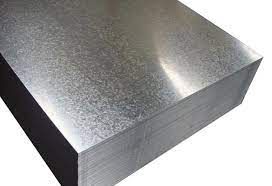Can I use galvanized sheet metal for kitchen tabletop?

When it comes to designing a kitchen, the choice of materials for your tabletop is crucial. Galvanized sheet metal, known for its durability and industrial aesthetic, has gained popularity as a unique option for kitchen tabletops. However, before diving into this design choice, it’s essential to understand the pros and cons associated with using galvanized sheet metal in your kitchen. Galvanized metal, which is steel with a zinc coating, lacks the durability and polishability of solid zinc sheeting. It may contain minute amounts of toxic substances like chromate, and zinc itself is not considered entirely food-safe as it can dissolve slightly into acidic foods. Additionally, galvanizing can discolor to a rusty look prematurely. Solid zinc countertops are a better alternative for kitchen surfaces.
Pros of Using Galvanized Sheet Metal for Kitchen Tabletops:
-
Durability: Galvanized sheet metal is highly durable and resistant to corrosion, making it ideal for withstanding the wear and tear of daily kitchen activities.
-
Easy Maintenance: This material is relatively easy to clean and maintain, requiring simple wiping down with a damp cloth to keep it looking pristine.
-
Industrial Aesthetic: Galvanized sheet metal fabrication adds a modern and industrial touch to your kitchen, creating a unique focal point that can complement various design styles.
-
Heat Resistance: Galvanized sheet metal is a type of steel that has been coated with a layer of zinc to protect it from corrosion. This coating not only provides excellent rust resistance but also enhances the material’s durability and longevity.
-
Cost-Effective: Compared to other materials like stone or solid wood, galvanized sheet metal can be a more budget-friendly option for those looking to achieve a stylish yet affordable kitchen design.
Cons of Using Galvanized Sheet Metal for Kitchen Tabletops:
-
Susceptibility to Scratches: Galvanized sheet metal is known for its durability and corrosion resistance due to its zinc coating. However, despite its robust nature, it can be susceptible to scratching, which can impact its appearance over time.
-
Limited Color Options: Galvanized sheet metal typically comes in a silver-gray color, limiting your choices if you prefer a wider range of colors for your kitchen tabletop.
-
Potential for Dents: Heavy impact or sharp objects can dent galvanized sheet metal, detracting from its smooth surface finish. Galvanized sheet metal, while durable and corrosion-resistant due to its zinc coating, can indeed be susceptible to dents from heavy impacts or sharp objects.
-
Prone to Water Stains: If not properly sealed or maintained, galvanized sheet metal can develop water stains or rust spots, requiring regular upkeep to prevent deterioration.
-
Noise Factor: The metallic surface of galvanized sheet metal may amplify noise from utensils or dishes placed on the tabletop, which could be a consideration in open-concept kitchens.
Tips for Using Galvanized Sheet Metal in Kitchen Tabletop Design:
-
Seal the Surface: To prevent water stains and rusting, consider sealing the surface of the galvanized sheet metal with an appropriate sealant recommended for metal surfaces.
-
Use Trivets and Cutting Boards: To minimize scratches and dents, use trivets or cutting boards when placing hot items or cutting food directly on the tabletop.
-
Regular Maintenance: Wipe down the tabletop regularly with a damp cloth and mild detergent to maintain its appearance and prevent buildup of dirt or grime.
-
Consider Surrounding Decor: Ensure that the industrial aesthetic of galvanized custom sheet metal fabrication complements the overall design and decor of your kitchen space for a cohesive look.
Using galvanized sheet metal for a kitchen tabletop can be a bold design choice that offers durability, easy maintenance, and a unique industrial aesthetic. However, it’s essential to weigh the pros and cons carefully before making this decision to ensure that it aligns with your preferences and lifestyle needs. By understanding how to care for and maintain galvanized sheet metal surfaces, you can enjoy a stylish and functional addition to your kitchen that stands out for years to come.

